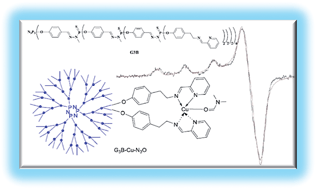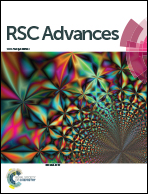Comparative EPR studies of Cu(ii)-conjugated phosphorous-dendrimers in the absence and presence of normal and cancer cells†
Abstract
Comparative electron paramagnetic resonance (EPR) studies of both Cu(II)-conjugated phosphorous-dendrimers and the corresponding Cu(II)-monomers bearing different ligand moieties are presented, showing that the coordination mode, the chemical structure, the flexibility and the stability of these complexes strongly depend on different parameters such as the nature of the ligands, the size (generation) of the dendrimer, and the molar ratio between Cu(II) and the ligands. Studies are performed in the presence of HCT-116 cancer cells, and MRC-5 normal cells allowing us to clarify the interaction mode of the Cu(II) ions in a biological medium at different equilibration times. These studies point out the particular behavior of the Cu(II)-conjugated phosphorous-dendrimer at generation 3, decorated with N-(di(pyridine-2-yl)methylene)ethanamine moiety (termed G3B). The G3B–Cu(II) complex shows strong anticancer activity. The EPR analysis helped to clarify the unusual properties of this complex in the absence and presence of normal and cancer cells.


 Please wait while we load your content...
Please wait while we load your content...